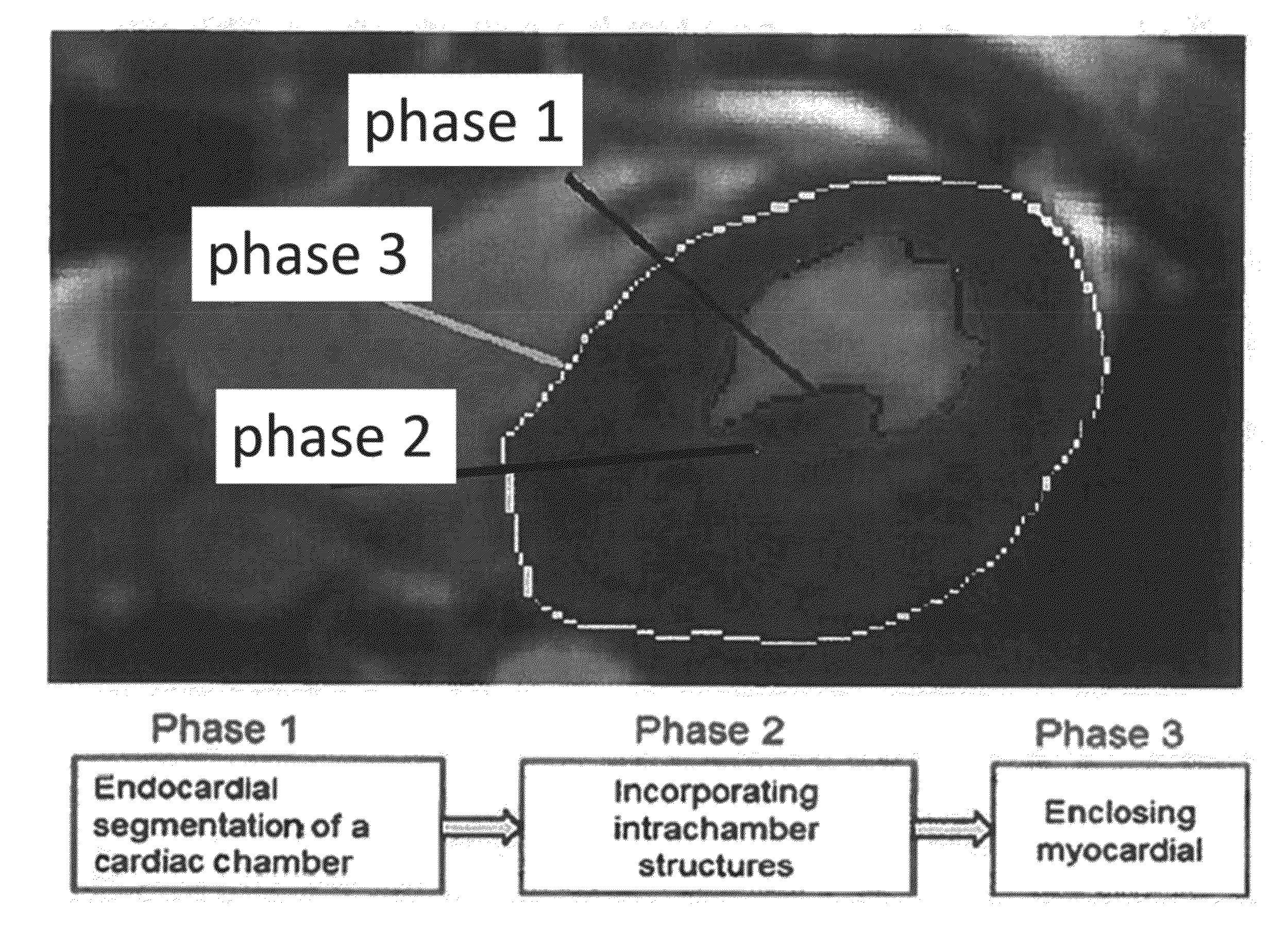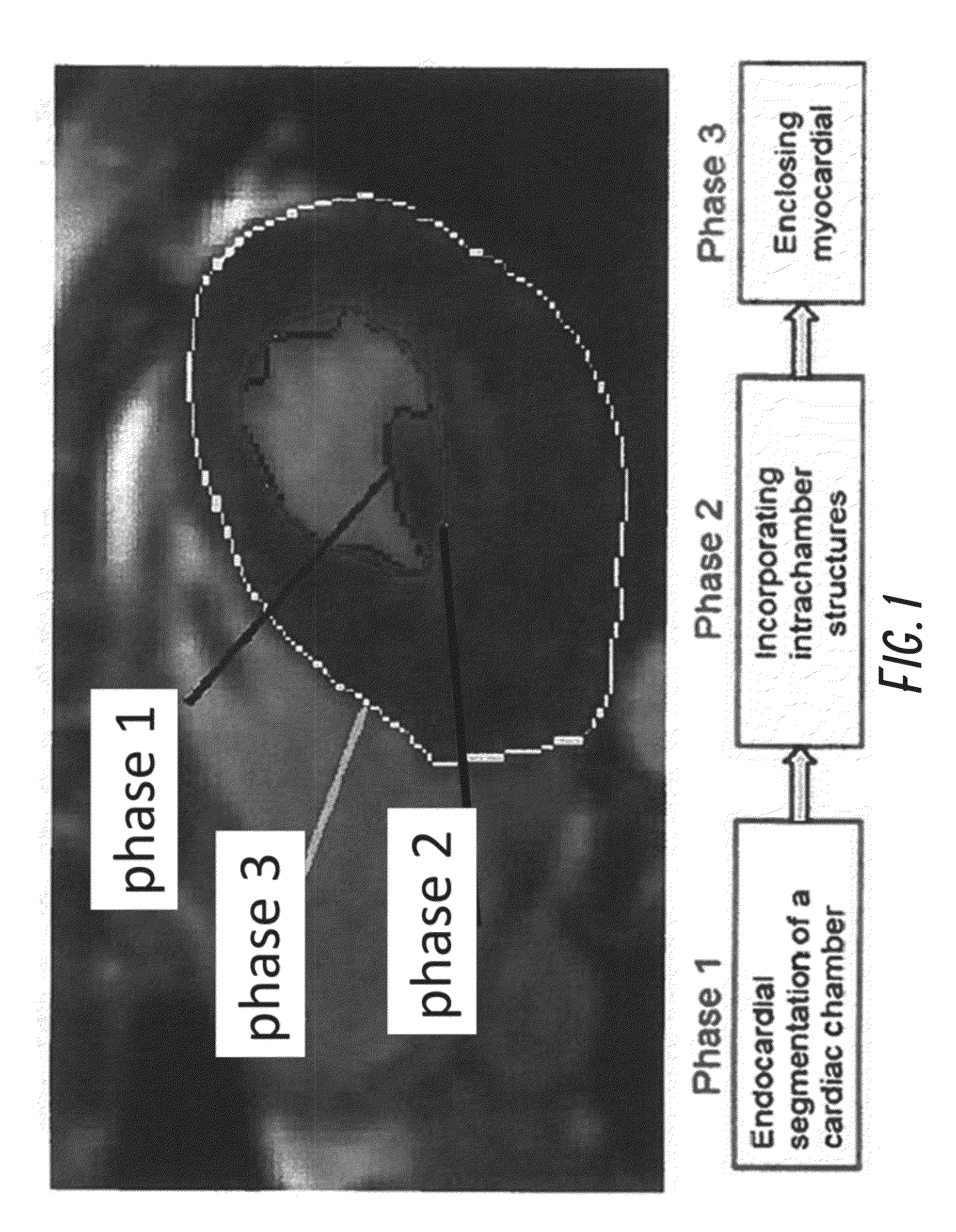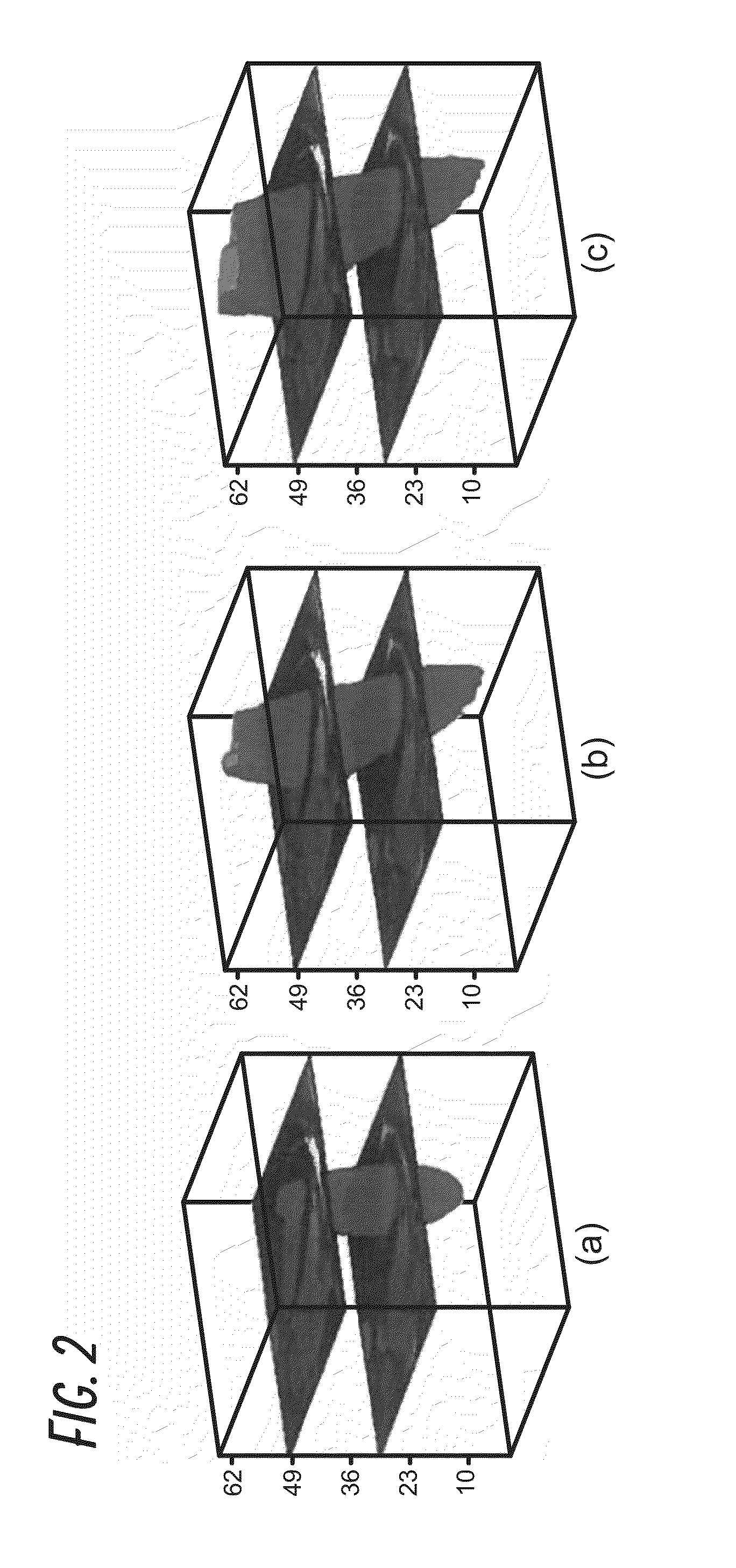Automated 3D Reconstruction of the Cardiac Chambers from MRI and Ultrasound
a 3d reconstruction and cardiac chamber technology, applied in the field of automatic 3d reconstruction of cardiac chambers from mri and ultrasound, can solve the problems of significant methodological variability, time-consuming manual segmentation, and loss of important details of objects
- Summary
- Abstract
- Description
- Claims
- Application Information
AI Technical Summary
Benefits of technology
Problems solved by technology
Method used
Image
Examples
Embodiment Construction
[0044]We have developed and tested a fast, automated 3D segmentation tool for cardiac Magnetic Resonance Imaging (MRI) or cardiac Ultrasound imaging. The segmentation algorithm automatically reconstructs raw cardiac MRI or Ultrasound data to a 3D model (i.e., direct volumetric segmentation), without relying on any prior statistical knowledge, making it widely applicable and useful for many clinical applications.
[0045]To overcome limitations of previous methodologies, the current invention utilizes emerging principles in image processing to develop a true 3D reconstruction technique without the need for training datasets or any user-driven segmentation. This was accomplished by developing an automatic segmentation framework that exploits the benefit of full volumetric imaging in an anatomically natural way. Because the current method does not rely on prior statistical knowledge, it offers dramatically more malleability than current algorithms by being broadly applicable across differ...
PUM
 Login to View More
Login to View More Abstract
Description
Claims
Application Information
 Login to View More
Login to View More - R&D
- Intellectual Property
- Life Sciences
- Materials
- Tech Scout
- Unparalleled Data Quality
- Higher Quality Content
- 60% Fewer Hallucinations
Browse by: Latest US Patents, China's latest patents, Technical Efficacy Thesaurus, Application Domain, Technology Topic, Popular Technical Reports.
© 2025 PatSnap. All rights reserved.Legal|Privacy policy|Modern Slavery Act Transparency Statement|Sitemap|About US| Contact US: help@patsnap.com



